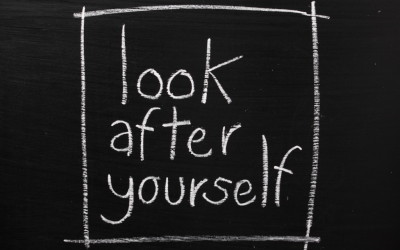This post was originally published at TreatingTMJ.com
Four concepts to encourage healing of musculoskeletal pain include:
- Reduce Strain
- Relaxation
- Posture
- Stretching
Apply moist heat or cold, and massage tender muscle and joints
Heat or ice applications used up to four times per day while resting may relax muscles responsible for causing pain. For heat, microwave a wet towel for approximately 1 minute or until towel is warm and wrap around a hot-water bottle or heated gel pack. For cold, use ice wrapped in a thin cloth on the area until some numbness is felt. Use what feels best. Apply for 15 to 20 minutes, taking care not to burn or freeze skin.
Avoid foods that irritate your symptoms and chew on both sides
Avoid firm foods, such as French bread or bagels. Avoid chewy food such as steak or candy. Cut fruits and vegetables into small pieces. Chewing on both sides will reduce strain. Do not chew gum.
Avoid events or activities that trigger the pain
Use a pain diary to review daily activities that aggravate the pain and modify your behavior accordingly.
Avoid muscle tensing habits and activities that strain the jaw and head muscles
Notice if you do any of these oral habits. Use reminders such as stickers or timers. If noticed, replace negative habits with positive habits such as the “n” tongue position.
- Teeth clenching and grinding
- Teeth touching or resting teeth together
- Teeth tapping
- Biting cheeks, lips, and objects
- Hard and chewy foods
- Resting your jaw on your hand
- Pushing the tongue against the teeth
- Pushing the jaw forward or to the side
- Tensing the jaw
- Jaw strain from musical instruments or scuba
- Opening the mouth too wide with yawning or singing
Practice general relaxation, meditation and abdominal breathing
This helps reduce your reactions to stressful life events, decreases tension in the jaw and oral habits such as clenching. (Right now I love the Calm app, you can get it on your iphone)
Maintain good jaw posture. Keep your tongue up, teeth apart, and jaw muscles relaxed
Closely monitor your jaw position during the day (waking hours) so that you maintain your jaw in a relaxed, comfortable position. This often involves placing your tongue lightly on the palate behind your upper front teeth (find this position by saying “n”), allowing the teeth to come apart while relaxing the jaw.
Stretch the jaw and temple muscles
Place two to three fingers between your front teeth for a count to 20: Rest and repeat 6 times. Gradually increase range of motion as tolerated.
Get a good night’s sleep
Avoid caffeinated beverages (e.g) coffee, tea, and soft drinks. Improve sleep environment by reducing light and noise. Get a comfortable mattress and pillow. Reduce stimulating activities in late evening including computer work, video, and exercising. Do not sleep on your stomach.
Use anti-inflammatory and pain-reducing medications
Short-term or intermittent use of over- the-counter ibuprofen, naproxen, acetaminophen, or aspirin (without caffeine) may reduce joint and muscle pain. Prolonged use daily may contribute to rebound pain and perpetuate the pain. Consider use of combination of analgesic and muscle relaxant in evening. Consult with your primary care provider when taking medications.


Hello
I have been diagnosed with TN1. I have the stabbing electric shock pain in my face. It come and goes but the pain has intensified. Ibam currently taking gabapentin 300 3 times a day. 1)Can physicsl therapy help and 2)are you aware of a physical therapist in
Charlotte NC?
Hello Jeannette, I am sorry to hear you are suffering from TN1. First it would be good to know what type of doctor diagnosed you? Are you getting relief from the Gabapentin? To answer your first question, yes we have had some success in treating patients with Trigeminal neuralgia but of course difficult to say in your case without a thorough evaluation. For the cases I have treated I have definitely been able to reduce the severity and frequency of stabbing, electrical shock type pain you mention. But it usually requires finding a PT with pretty good temporomandibular training, excellent with techniques to the upper cervical spine and the craniofacial bones and understanding on how to treat neural tension signs. One of our past employees and therapists Lisa Vanderbloomer who is now in NC speaks highly of Tom Campion http://ptforthecarolinas.com/About-Us/Staff he is in Charlotte. Now it appears Arden is about 2 hours from you, so if Tom is unable to help Seth Fabraio at Cornerstone PT http://www.cornerstoneptnc.com/PT/index.html is a very well trained TMJ therapist and has completed much of the course work and training that I have. I hope this helps and wish you well in your journey to recovery. Thank you for reaching out. Please keep us posted.
Thank you for mentioning how you can avoid straining your mouth by chewing your food with both sides of your mouth. My wife has noticed that her jaw has become sensitive ever since we ate steak for dinner last night, and she would like to find a way to help relieve the inflammation before we host a dinner party next week. We’ll see if we can find a professional that can provide her with TMJ treatment.